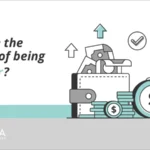Bullying is a pervasive problem that affects people of all ages, races, genders, and backgrounds. It can take many different forms, from verbal insults to physical violence, and can have long-lasting effects on the victim’s mental and emotional well-being. In this article, we will explore the different types of bullying and their effects, as well as provide resources for those who may need help and support. By understanding the various forms of bullying, we can work towards creating a safer and more inclusive environment for everyone.
Contents
Verbal Bullying
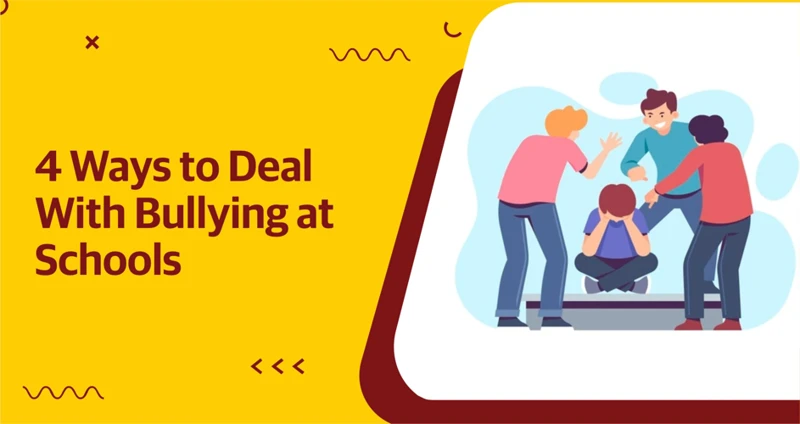
Verbal bullying is a type of bullying that involves using words to hurt or harm someone. It can take many forms, such as name-calling, teasing, insults, or spreading rumors. Verbal bullying can have serious effects on the victim, including low self-esteem, anxiety, depression, and even suicide. It can also create a hostile environment and affect the victim’s academic or professional performance. If you suspect someone is being verbally bullied, it is important to speak up and report it to a trusted authority figure. For more information on different types of bullying and how to prevent it, visit /types-of-bullying/.
Definition
Verbal bullying is a type of bullying that involves the use of words to harm and emotionally manipulate the victim. This can include name-calling, teasing, insults, and making threatening remarks. Verbal bullying can happen anywhere, from the classroom to the playground, and can be just as harmful as physical bullying. It can cause long-lasting emotional damage to the victim and can lead to anxiety, depression, and even suicidal thoughts. Verbal bullying can be difficult to spot and can often go unnoticed by adults, which makes it important for victims to speak out and seek help from a trusted adult or authority figure.
Examples
Verbal Bullying: Calling someone names, teasing, insulting, spreading rumors, threatening, or making derogatory comments about someone’s race, religion, sexuality, or appearance. For example, a student calling another student a “loser” or “freak” on a daily basis, making fun of their clothes or hairstyle, or spreading rumors that they are gay or promiscuous.
Physical Bullying: Hitting, kicking, pushing, tripping, spitting, stealing, or damaging someone’s property. For example, a group of students punching and kicking another student in the schoolyard, taking someone’s lunch money, or breaking someone’s glasses.
Relational Aggression: Excluding, gossiping, or manipulating someone to damage their reputation or social status. For example, a group of girls spreading rumors about another girl to make her look bad, or a group of boys excluding a classmate from social activities because they don’t like him.
Cyberbullying: Harassing, intimidating, or threatening someone online or through social media. For example, sending threatening messages, spreading rumors, or posting embarrassing pictures or videos of someone without their consent.
Sexual Bullying: Making unwanted sexual advances, comments, or gestures towards someone, or spreading rumors about their sexual behavior. For example, a student making sexual comments or gestures towards another student in class, or spreading rumors that a student is gay or sexually promiscuous.
Racial Bullying: Using racial slurs, making derogatory comments, or engaging in other forms of discrimination based on someone’s race or ethnicity. For example, a group of students making fun of another student’s accent or skin color, or using racial slurs to insult someone.
Remember, these are just a few examples of the types of bullying that exist. It is important to recognize that bullying can take many forms and can be very subtle or hidden. If you or someone you know is experiencing any form of bullying, it is important to seek help and support. Resources are available, such as speaking with a trusted teacher, counselor, or parent, and seeking professional counseling. Additionally, it is important to report any incidents of bullying to the appropriate authorities, such as school administrators or the police. For more information on what to do if you see bullying, visit /can-a-teacher-take-your-phone/.
Effects
Bullying can have a range of negative effects on its victims, affecting them mentally, physically, and emotionally. Victims of bullying may experience a range of negative mental health outcomes, such as anxiety, depression, and suicidal thoughts. Bullying can also lead to physical health problems such as headaches, stomachaches, and sleep disturbances. Victims may become socially isolated or withdrawn, and they may struggle academically or professionally. In severe cases, bullying can even lead to post-traumatic stress disorder (PTSD) and other long-term mental health issues. The effects of bullying are not limited to the victim, as bystanders may also experience negative outcomes such as guilt, anxiety, and a sense of powerlessness. It is important to take the effects of bullying seriously and to provide support and resources to those who have been affected. With proper intervention and support, victims of bullying can begin to recover and rebuild their lives.
Physical Bullying
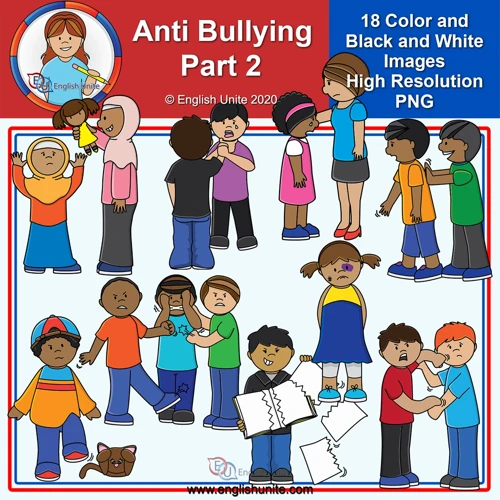
Physical Bullying: Physical bullying involves the use of physical force to harm or intimidate the victim. This can include hitting, kicking, tripping, pushing, or any other physical act that causes harm or damage to the victim. Physical bullying is often the most visible form of bullying, as it can result in bruises, cuts, and other physical injuries. The effects of physical bullying can be long-lasting, both physically and emotionally. Victims may experience anxiety, depression, and post-traumatic stress disorder (PTSD) as a result of the physical abuse they have suffered. It is important to recognize the signs of physical bullying and take action to stop it.
Definition
Verbal bullying involves using words to harm, intimidate, or belittle someone. It can take many forms, including name-calling, teasing, insults, and threats. Verbal bullying can occur in person or online, and it can be particularly difficult to escape because it can happen anywhere and at any time. It is often used to gain power over someone else and can cause long-lasting emotional harm. Verbal bullying is a pervasive problem in schools and workplaces, and it can have serious consequences for both the victim and the bully.
Examples
- Name-calling: Calling someone names can be very hurtful. Examples include calling someone fat, stupid, or ugly.
- Teasing: Teasing someone can quickly turn into bullying. This can involve mocking someone’s appearance, interests, or habits.
- Insults: Insulting someone can be a form of verbal bullying. Examples include telling someone they are worthless or that nobody likes them.
- Threats: Threatening someone can also be verbal bullying. This can include threatening to hurt someone physically or emotionally.
- Hitting: Physically hitting someone is a clear example of bullying. This can involve punching, kicking, or slapping someone.
- Pushing: Pushing someone can cause physical harm and is a form of bullying. This can include pushing someone down stairs or into lockers.
- Stealing: Stealing someone’s belongings or lunch money is a form of physical bullying. This can lead to the victim feeling helpless and vulnerable.
- Damaging property: Destroying or damaging someone’s property is a form of bullying. This can include breaking someone’s phone or vandalizing their locker.
- Exclusion: Excluding someone from a social group is a form of bullying. This can involve purposely not inviting someone to a party or event.
- Gossiping: Spreading rumors or gossip about someone can be a form of bullying. This can include sharing embarrassing or personal information about someone.
- Ignoring: Ignoring someone can also be a form of bullying. This can include refusing to talk to someone or acknowledge their presence.
- Alienation: Alienating someone from their friends or family is a form of relational aggression. This can include turning people against someone or spreading lies about them.
- Harassment: Harassing someone online is a form of cyberbullying. This can involve sending threatening or insulting messages or posting hurtful comments on social media.
- Impersonation: Impersonating someone online is a form of cyberbullying. This can involve creating fake profiles or accounts and pretending to be someone else.
- Cyberstalking: Cyberstalking involves following someone around online and constantly sending them unwanted messages or comments.
- Outing: Outing someone’s personal information or secrets online is a form of cyberbullying. This can include sharing embarrassing photos or videos.
- Sexual comments: Making sexual comments or jokes about someone is a form of sexual bullying. This can include making inappropriate comments about someone’s body.
- Sexual harassment: Sexual harassment is a form of sexual bullying. This can include touching someone inappropriately or making sexual advances towards them.
- Sexual assault: Sexual assault is a serious form of sexual bullying. This can involve forcing someone to engage in sexual activity against their will.
- Sexual rumors: Spreading rumors or gossip about someone’s sexual behavior or orientation is a form of sexual bullying.
- Racial slurs: Using racial slurs or making racist comments is a form of racial bullying. This can include using derogatory language towards someone of a different race or ethnicity.
- Discrimination: Discriminating against someone based on their race or ethnicity is a form of racial bullying. This can include not allowing someone to join a group or participate in an activity because of their race.
- Intimidation: Intimidating someone because of their race or ethnicity is a form of racial bullying. This can include making threats or using physical violence.
- Exclusion: Excluding someone from a group or activity because of their race or ethnicity is a form of racial bullying.
It’s important to know the signs of bullying so that you can identify it early and take action. Some signs of bullying include:
- Changes in behavior or mood
- Unexplained injuries or illnesses
- Loss of interest in school or activities
- Changes in eating or sleeping habits
If you witness bullying, it’s important to take action. Here are some things you can do:
- Speak up and tell the bully to stop
- Offer support to the victim
- Report the bullying to a teacher or authority figure
- Encourage others to speak out against bullying
If you or someone you know is being bullied, there are resources available to help. Here are some organizations that offer support and information:
- National Bullying Prevention Center
- StopBullying.gov
- Stomp Out Bullying
- Parents, Families and Friends of Lesbians and Gays (PFLAG)
Effects
The effects of bullying can be devastating and long-lasting. Victims of bullying often suffer from low self-esteem and may develop depression or anxiety. They may also experience physical effects such as headaches, stomachaches, and trouble sleeping. In severe cases, bullying can lead to suicide or self-harm. Bullying can also have a negative impact on a victim’s academic performance and ability to form healthy relationships. It can cause them to feel isolated and alone, and they may struggle to trust others. Bullying can have a ripple effect on the entire community, creating a culture of fear and intimidation. It is important to recognize the harmful effects of bullying and take action to prevent it.
Relational Aggression
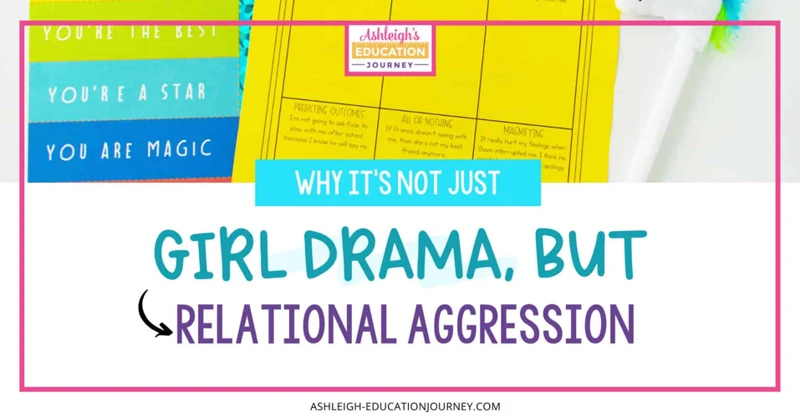
Relational Aggression: Relational aggression, also known as social bullying, is a form of bullying that involves intentionally manipulating and damaging social relationships. It is a covert form of bullying that aims to hurt someone’s social status or reputation. Examples of relational aggression include spreading rumors, excluding someone from a social group, and giving someone the silent treatment. The effects of relational aggression can be long-lasting, as it damages someone’s self-esteem and can lead to depression and anxiety. It can also cause social isolation, making the victim feel alone and unsupported.
Definition
Verbal bullying involves the use of words to harm others, either through insults, name-calling, teasing, or threats. This type of bullying can occur in person or through electronic means, such as social media or text messaging. Verbal bullying can be direct or indirect, and it can cause emotional distress, anxiety, and depression. It is important to note that verbal bullying can be just as damaging as physical bullying and should be taken seriously. If you or someone you know is experiencing verbal bullying, it is important to speak up and seek help. Remember that no one deserves to be mistreated or made to feel inferior.
Examples
Examples

Verbal Bullying
| Example | Description |
|---|---|
| Teasing | Repetitive name-calling or mocking based on the victim’s appearance, beliefs, or abilities. |
| Threatening | Using words to intimidate or scare someone into doing something they don’t want to do. This can include threats of physical violence or harm. |
| Insulting | Harsh comments that belittle or humiliate the victim. Insults can be directed at any aspect of the victim’s life, from their family to their hobbies. |
Physical Bullying
- Hitting or Punching: Physical aggression that results in bodily harm to the victim.
- Pushing or Shoving: Using physical force to move or hurt the victim.
- Stealing or Damaging Property: Taking or destroying someone’s belongings to intimidate or control them.
Relational Aggression
- Gossiping or Spreading Rumors: Spreading negative information about the victim to damage their reputation or social standing.
- Exclusion: Intentionally leaving someone out of social events or group activities.
- Manipulation: Using emotional tactics to control the victim’s behavior or relationships with others.
Cyberbullying
- Harassment: Repeatedly sending hurtful messages or comments online or through social media.
- Posting Embarrassing Photos or Videos: Sharing personal or embarrassing content of the victim without their consent.
- Impersonation: Creating fake social media accounts to bully or harass the victim.
Sexual Bullying
- Unwanted Touching: Forcing physical contact on the victim without their consent.
- Sexual Harassment: Making sexual comments or gestures that make the victim feel uncomfortable or unsafe.
- Sexual Coercion: Pressuring the victim into sexual acts they are not comfortable with.
Racial Bullying
- Racial Slurs: Using derogatory language or racial epithets to insult or degrade the victim.
- Physical Violence: Using physical force or intimidation to harm the victim because of their race or ethnicity.
- Isolation: Excluding or segregating the victim based on their race or ethnicity.
Effects
Effects
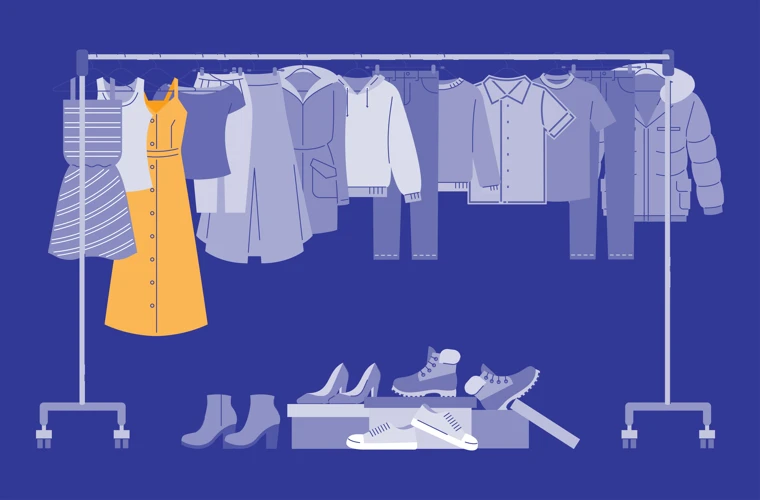
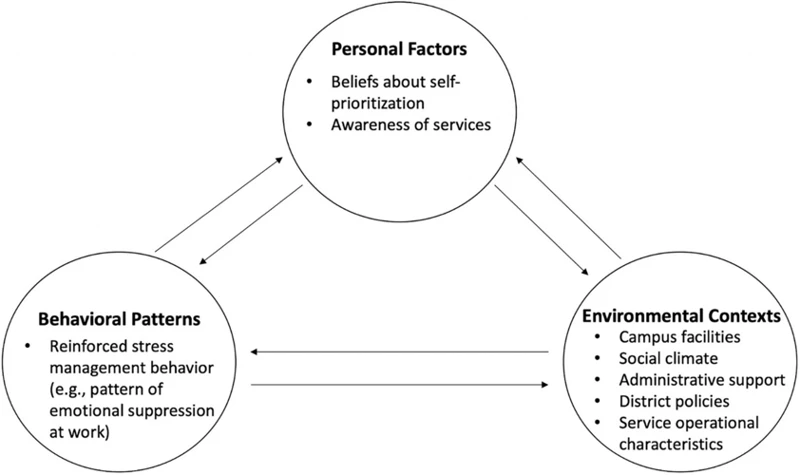
Verbal Bullying
| Effects on victims | Effects on bullies |
|
|
Physical Bullying
| Effects on victims | Effects on bullies |
|
|
Relational Aggression
| Effects on victims | Effects on bullies |
|
|
Cyberbullying
| Effects on victims | Effects on bullies |
|
|
Sexual Bullying
| Effects on victims | Effects on bullies |
|
|
Racial Bullying
| Effects on victims | Effects on bullies |
|
|
It can be difficult to spot bullying, but some common signs to look for include changes in behavior, mood, or performance at school or work. Victims may also withdraw from social situations, seem anxious, or have unexplained injuries.
If you witness bullying, it is important to report it to a teacher, supervisor, or other authority figure. You can also provide support to the victim by listening to their concerns and offering help.
There are many resources available for those affected by bullying, including support groups, counseling services, and hotlines. Some organizations that offer help and support include the National Bullying Prevention Center, StopBullying.gov, and the Trevor Project.
Cyberbullying
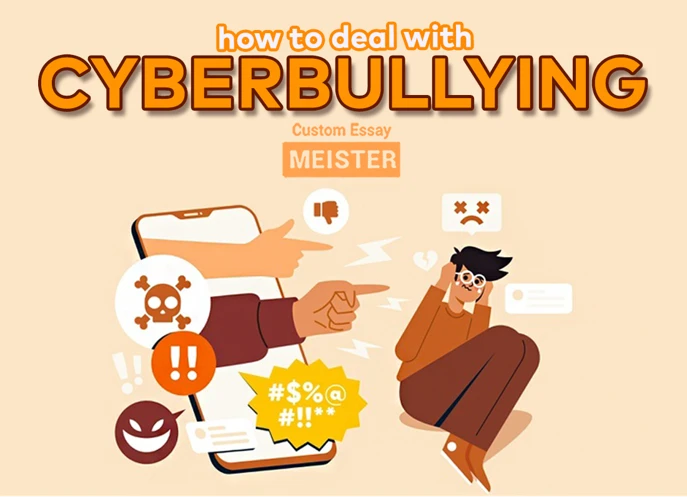
involves using technology to harass, intimidate, or humiliate someone. Unlike traditional bullying, cyberbullying can occur anywhere and at any time, making it difficult to escape. Examples of cyberbullying include sending threatening or insulting messages, spreading rumors online, and sharing embarrassing photos or videos. The effects of cyberbullying can be severe, including anxiety, depression, and even suicide. It is important to recognize the signs of cyberbullying and take action to stop it. This can involve blocking the bully, reporting the behavior to authorities, and seeking support from friends, family, or counselors.
Definition
Verbal bullying is a type of bullying that involves the use of words to hurt, humiliate, or intimidate someone. It can take various forms, including name-calling, teasing, taunting, threatening, or spreading rumors. Verbal bullying can occur in person, over the phone, or online. It is a common form of bullying in schools, and it can have long-lasting effects on the victim’s mental health and self-esteem. Verbal bullies often use their words to exert power and control over their victims, and they may target individuals who are perceived as weak or vulnerable. It is important to note that verbal bullying is not just harmless teasing but a serious form of aggression that can have serious consequences.
Examples
| Example | Impact |
|---|---|
| Name-calling: calling someone fat, stupid, or ugly | Can lead to low self-esteem, depression, and anxiety |
| Teasing: making fun of someone’s clothes, hair, or hobbies | Can cause embarrassment, shame, and social isolation |
| Threatening: telling someone you will hurt them or their loved ones | Can create fear, stress, and trauma |
| Example | Impact |
|---|---|
| Hitting: punching, slapping, or kicking someone | Can cause physical harm, pain, and injury |
| Pushing: shoving someone aggressively or into a wall | Can result in bruises, cuts, and broken bones |
| Stealing: taking someone’s possessions without permission | Can lead to financial loss, distrust, and emotional distress |
- Exclusion: purposefully leaving someone out of social activities or groups
- Gossiping: spreading rumors or negative information about someone behind their back
- Ignoring: refusing to acknowledge someone’s presence or contributions
- Cyberstalking: following someone online and sending them unwanted messages
- Trolling: posting intentionally hurtful or offensive comments on someone’s social media or blog
- Public Shaming: sharing embarrassing photos or videos of someone online
| Example | Impact |
|---|---|
| Sexual Harassment: making unwanted sexual advances or comments | Can cause trauma, shame, and fear |
| Sexual Assault: touching or forcing someone to engage in sexual activity without their consent | Can cause physical and emotional trauma, PTSD, and other mental health issues |
| Sexual Rumors: spreading false or embarrassing information about someone’s sexual behavior | Can lead to social isolation, embarrassment, and depression |
- Insults: using racial slurs or derogatory comments about someone’s race or ethnicity
- Exclusion: purposefully leaving someone out of social activities or groups based on their race or ethnicity
- Physical Attacks: using physical violence or threats based on someone’s race or ethnicity
Effects
Effects


Verbal Bullying
Low self-esteem: Children who are verbally bullied may develop low self-esteem, which can affect their academic performance and social interactions.
Depression: Verbal bullying can lead to depression, which may cause a child to withdraw from social interactions and become isolated.
Anxiety: Children who are verbally bullied may develop anxiety, which can manifest as physical symptoms such as stomachaches and headaches.
Physical Bullying
Injuries: Physical bullying can result in injuries ranging from bruises and cuts to broken bones and concussions.
Post-traumatic stress disorder (PTSD): Children who are physically bullied may develop PTSD, which can cause flashbacks, nightmares, and anxiety.
Low self-esteem: Physical bullying can also lead to low self-esteem, which can affect a child’s academic performance and social interactions.
Relational Aggression
Low self-esteem: Children who are victims of relational aggression may develop low self-esteem, which can affect their academic performance and social interactions.
Depression: Relational aggression can also lead to depression, which may cause a child to withdraw from social interactions and become isolated.
Anxiety: Children who are victims of relational aggression may develop anxiety, which can manifest as physical symptoms such as stomachaches and headaches.
Cyberbullying
Depression: Cyberbullying can lead to depression, which may cause a child to withdraw from social interactions and become isolated.
Anxiety: Children who are victims of cyberbullying may develop anxiety, which can manifest as physical symptoms such as stomachaches and headaches.
Suicidal ideation: Cyberbullying can lead to suicidal ideation, which can be a dangerous consequence of this type of bullying.
Sexual Bullying
Low self-esteem: Children who are victims of sexual bullying may develop low self-esteem, which can affect their academic performance and social interactions.
Depression: Sexual bullying can also lead to depression, which may cause a child to withdraw from social interactions and become isolated.
Anxiety: Children who are victims of sexual bullying may develop anxiety, which can manifest as physical symptoms such as stomachaches and headaches.
Racial Bullying
Low self-esteem: Children who are victims of racial bullying may develop low self-esteem, which can affect their academic performance and social interactions.
Depression: Racial bullying can also lead to depression, which may cause a child to withdraw from social interactions and become isolated.
Anxiety: Children who are victims of racial bullying may develop anxiety, which can manifest as physical symptoms such as stomachaches and headaches.
If you notice sudden changes in a child’s behavior, such as withdrawing from social interactions or becoming more aggressive, it may be a sign of bullying. Look for physical signs such as injuries or changes in eating or sleeping habits.
If you see bullying happening, it is important to intervene and stop it. Talk to the child who is being bullied and offer support. Talk to the child who is doing the bullying and explain why their behavior is unacceptable.
There are many resources available for children who are victims of bullying and their families. These include counseling services, support groups, and online resources such as stopbullying.gov.
Sexual Bullying
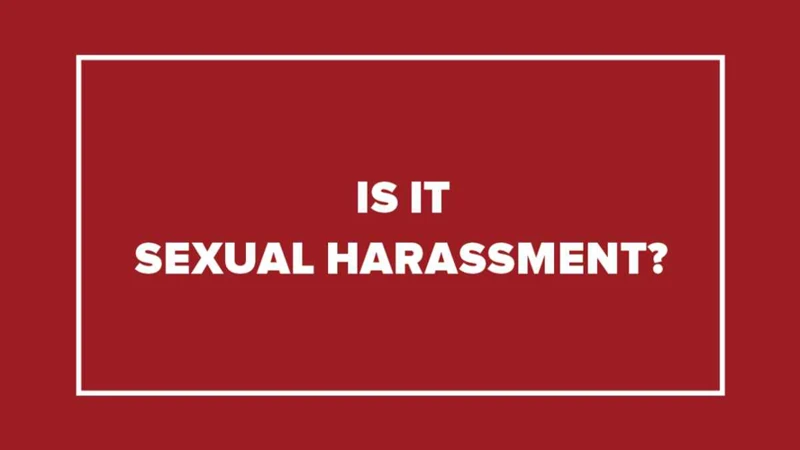
Sexual bullying is a form of harassment that involves unwanted sexual comments, gestures, and physical contact. It can also include spreading rumors or making sexual advances towards someone without their consent. This type of bullying can have serious and long-lasting effects on a victim’s mental health, leading to feelings of shame, guilt, and even trauma. Victims of sexual bullying may feel isolated and afraid to speak out, but it’s important to seek help and support from trusted individuals and resources. Awareness and education on sexual bullying can help prevent and reduce instances of this harmful behavior.
Definition
Bullying is defined as aggressive behavior that is intended to cause harm or distress to a person repeatedly over time. The behavior can be physical, verbal, or relational in nature, and can occur in person or through electronic communication. Verbal bullying involves the use of words to hurt or humiliate the victim, while physical bullying involves physical acts of aggression such as hitting, kicking, or pushing. Relational aggression is a form of bullying that involves manipulating social relationships to damage a victim’s reputation or social status. Cyberbullying is a type of bullying that occurs through electronic communication, such as social media, text messages, or emails. Sexual bullying involves unwanted sexual comments, gestures, or physical contact, and racial bullying involves targeting a person because of their race or ethnicity. It is important to note that bullying is different from normal conflict or teasing, as it is a deliberate and repeated attempt to harm another person.
Examples
Verbal Bullying:
- Teasing someone about their appearance or clothing
- Name-calling or using derogatory language
- Spreading rumors or gossip about someone
- Threatening to harm someone verbally
Physical Bullying:
- Pushing, hitting, or kicking someone
- Stealing or destroying someone’s belongings
- Forcing someone to do something against their will
- Sexual assault or harassment
Relational Aggression:
- Excluding someone from a group or activity
- Igniting rumors, gossip, or lies about someone
- Using peer pressure to manipulate someone
- Threatening to end a friendship or relationship
Cyberbullying:
- Sending threatening or harassing messages online
- Posting embarrassing photos or videos of someone online
- Creating fake profiles or spreading rumors on social media
- Sharing personal information without permission
Sexual Bullying:
- Making sexual comments or gestures towards someone
- Exposing oneself to someone without consent
- Spreading rumors about someone’s sexual activity
- Forcing someone to engage in sexual activity against their will
Racial Bullying:
- Making racist comments or jokes towards someone
- Using racial slurs or derogatory language
- Excluding someone based on their race or ethnicity
- Threatening or physically assaulting someone because of their race
Effects
Verbal Bullying: The effects of verbal bullying can be detrimental to a victim’s mental and emotional well-being. Verbal bullying can cause anxiety, depression, and low self-esteem. Victims may experience difficulty in trusting others and forming relationships, as well as in academic and social settings. Verbal bullying can also lead to physical symptoms such as headaches, stomachaches, and insomnia.
Physical Bullying: The effects of physical bullying can be severe and long-lasting. Victims of physical bullying may experience physical injuries such as bruises, cuts, and broken bones. Beyond the physical injuries, victims of physical bullying may develop anxiety, depression, and post-traumatic stress disorder (PTSD). They may become withdrawn and have difficulty trusting others. Physical bullying can also lead to academic and social difficulties and may impact a victim’s ability to participate in normal activities.
Relational Aggression: The effects of relational aggression can be difficult to detect but are no less damaging to victims. Relational aggression can cause victims to feel isolated and rejected by their peers, leading to depression and anxiety. It can also impact a victim’s academic performance and social skills. Victims may become withdrawn and avoid social situations, leading to further isolation.
Cyberbullying: The effects of cyberbullying can be especially damaging due to the wide reach of social media and the internet. Victims of cyberbullying may experience anxiety, depression, and suicidal thoughts. Cyberbullying can also impact a victim’s academic performance and social life. Victims may become isolated and have difficulty forming relationships and trusting others.
Sexual Bullying: The effects of sexual bullying can be severe and long-lasting. Victims of sexual bullying may experience anxiety, depression, and PTSD. They may also experience physical symptoms such as headaches, stomachaches, and insomnia. Sexual bullying can also lead to academic and social difficulties and may impact a victim’s ability to participate in normal activities.
Racial Bullying: The effects of racial bullying can be equally damaging. Victims of racial bullying may experience anxiety, depression, and feelings of isolation. They may become withdrawn and have difficulty forming relationships. Racial bullying can also impact a victim’s academic performance and social life. Victims may experience physical symptoms such as headaches, stomachaches, and insomnia.
It is important to note that the effects of bullying can be long-lasting and impact a person well into adulthood. Victims of bullying may require therapy and support to overcome the trauma they have experienced. It is also important for bystanders to understand the effects of bullying and to take action to prevent it from occurring.
Racial Bullying
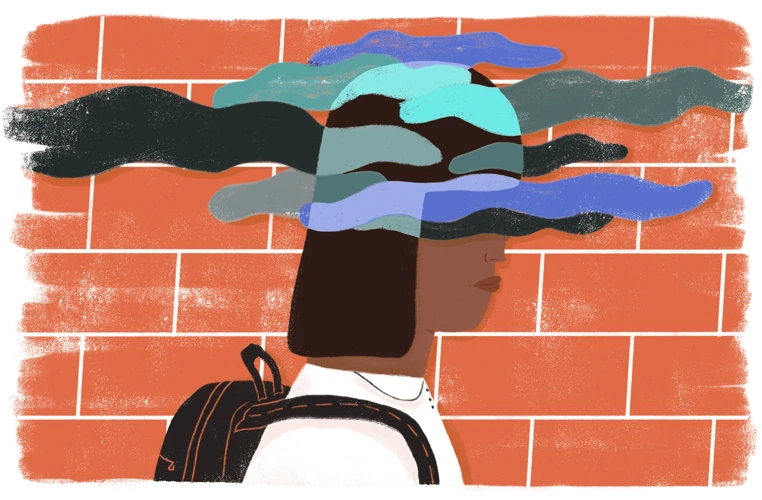
Racial bullying is a form of bullying that targets someone based on their race or ethnicity. This can include name-calling, racial slurs, or treating someone unfairly because of their skin color. It can also involve physical violence or threats. The effects of racial bullying can be devastating, leading to feelings of isolation, anxiety, and depression. In some cases, it can cause long-term psychological damage. It’s important to recognize and address racial bullying to create a safe and inclusive environment for everyone.
Definition
Verbal bullying is a type of bullying that involves using words to hurt, humiliate, or intimidate someone. Verbal bullies may tease, insult, or make fun of their victims. They may also use threats or put-downs to make their victims feel small or powerless. Verbal bullying can happen in person, over the phone, or online. It can be a one-time incident or ongoing, and it can be just as harmful as physical bullying. Some common examples of verbal bullying include name-calling, spreading rumors, and making derogatory comments about a person’s appearance, abilities, or background. The effects of verbal bullying can be devastating and long-lasting, leading to low self-esteem, depression, anxiety, and even suicide. It is important to recognize and address verbal bullying to prevent further harm to the victim.
Examples
Verbal Bullying: Name-calling, teasing, taunting, insulting, threatening, and making racist, sexist, or homophobic comments are all examples of verbal bullying. For instance, calling someone “stupid” or “ugly” repeatedly or spreading rumors about them behind their back is a form of verbal bullying. Verbal bullying can lead to low self-esteem, depression, anxiety, and even suicide.
Physical Bullying: Hitting, pushing, kicking, tripping, spitting, and breaking someone’s belongings are all examples of physical bullying. For example, physically assaulting someone in the hallway, stealing someone’s lunch money, or damaging someone’s property are all forms of physical bullying. Physical bullying can cause physical injuries, emotional distress, and can lead to long-term mental health problems.
Relational Aggression: Gossiping, spreading rumors, excluding someone from a group, and manipulating friendships are all examples of relational aggression. For instance, spreading rumors about someone’s sexual orientation or excluding someone from a social event is a form of relational aggression. Relational aggression can lead to feelings of loneliness, depression, and anxiety.
Cyberbullying: Sending threatening messages, spreading rumors, posting humiliating pictures or videos, and creating fake profiles are all examples of cyberbullying. For example, sending someone hateful messages on social media, sharing someone’s private photos without their consent, or posting false information about someone online is a form of cyberbullying. Cyberbullying can be particularly harmful because it can happen 24/7 and be difficult to escape.
Sexual Bullying: Making unwanted sexual comments, gestures, or advances, and spreading rumors about someone’s sexual behavior are all examples of sexual bullying. For instance, making inappropriate comments about someone’s body or spreading rumors about someone’s sexual activity is a form of sexual bullying. Sexual bullying can lead to feelings of shame, guilt, and can cause long-term mental health problems.
Racial Bullying: Making racist comments, jokes, slurs, or gestures, and excluding someone based on their race or ethnicity are all examples of racial bullying. For example, using racial slurs or mocking someone’s accent is a form of racial bullying. Racial bullying can cause feelings of anger, sadness, and can lead to long-term mental health problems.
Remember, bullying can take many forms, and it’s important to recognize the signs and intervene when necessary.
Effects
Effects


Verbal Bullying
Verbal bullying can have serious and long-lasting effects on its victims. Victims of verbal bullying may experience low self-esteem, depression, anxiety, and even post-traumatic stress disorder. The effects of verbal bullying can also lead to physical symptoms, such as headaches, stomachaches, and trouble sleeping. Verbal bullying can also impact the victim’s social life, making it difficult to form and maintain relationships.
Physical Bullying
Physical bullying can be very traumatic for victims. It can cause physical injuries such as bruises, cuts, and broken bones, but it can also cause long-term emotional effects. Victims of physical bullying may experience anxiety, fear, depression, and post-traumatic stress disorder. Physical bullying can also lead to a decreased sense of self-worth and confidence, as well as difficulty trusting others.
Relational Aggression
Relational aggression can have serious emotional effects on its victims. Victims of relational aggression may experience anxiety, depression, and even suicidal thoughts. They may also feel isolated and excluded from social groups, leading to feelings of loneliness and hopelessness. Relational aggression can also cause victims to have trouble trusting others and forming new relationships.
Cyberbullying
The effects of cyberbullying can be just as severe as traditional forms of bullying. Victims of cyberbullying may experience anxiety, depression, and even suicidal thoughts. Cyberbullying can also lead to social isolation, making it difficult for victims to form and maintain relationships. Additionally, cyberbullying can have a long-lasting impact on a victim’s reputation, leading to difficulty in finding employment or advancing in their career.
Sexual Bullying
Sexual bullying can have serious and long-lasting effects on its victims. Victims of sexual bullying may experience anxiety, depression, and post-traumatic stress disorder. They may also have difficulty forming and maintaining relationships, and may struggle with intimacy and trust. Sexual bullying can also lead to physical symptoms such as headaches and stomachaches.
Racial Bullying
Racial bullying can have serious emotional effects on its victims. Victims of racial bullying may experience anxiety, depression, and even suicidal thoughts. They may also feel isolated and excluded from social groups, leading to feelings of loneliness and hopelessness. Racial bullying can also cause victims to have trouble trusting others and forming new relationships.
It is important to be aware of the signs of bullying, including changes in behavior or mood, unexplained physical injuries, and social isolation. It is also important to pay attention to how others are treating those around them, and to intervene when necessary.
If you witness bullying, it is important to intervene as soon as possible. This can include speaking up against the bullying, offering support to the victim, and reporting the bullying to a teacher or other authority figure.
If you or someone you know is experiencing bullying, there are resources available for help and support. These can include counseling services, support groups, and hotlines. It is important to seek help and support in order to cope with the effects of bullying and to prevent it from happening in the future.
Conclusion
Bullying is a serious issue that can have long-lasting effects on its victims. It is important to be able to identify the different types of bullying, such as verbal, physical, relational aggression, cyberbullying, sexual bullying, and racial bullying. Each type of bullying has its own unique definition, examples, and effects. If you suspect someone is being bullied, it is important to know how to spot bullying and what to do if you see it. There are resources available for help and support, and it is important to take action to stop bullying and create a safe and inclusive environment for everyone.
How to Spot Bullying
Bullying can be difficult to spot, especially if the victim is trying to hide it. However, there are some signs to look out for that may indicate someone is being bullied. Some of the signs of bullying include unexplained injuries or bruises, lost or destroyed clothing or belongings, frequent headaches or stomach aches, avoidance of certain places or activities, changes in eating habits, sudden loss of friends or avoidance of social situations, and changes in behavior or mood. These signs may indicate that someone is being bullied and may need help.
It is also important to pay attention to how people are treating each other. If you notice someone constantly making fun of or belittling others, excluding someone from a group, spreading rumors or gossip, or physically hurting someone, they may be engaging in bullying behavior. It is important to take these behaviors seriously and address them before they escalate.
If you suspect someone is being bullied or see bullying behavior, it is important to take action. Talk to the victim and let them know that you are there to support them. Encourage them to report the bullying to a teacher, counselor, or other trusted adult. If you witness bullying, do not ignore it. Intervene if it is safe to do so, and report the behavior to a teacher or other adult.
By being aware of the signs of bullying and taking action, we can help prevent bullying and create a safer and more inclusive environment for everyone.
What to Do If You See Bullying
If you witness bullying, it is important to take action:
- Speak up: If you feel safe, tell the bully to stop their behavior. If you don’t feel comfortable confronting the bully, find someone who can help, such as a teacher or counselor.
- Support the victim: Let them know that you are there for them and that they are not alone. Offer to walk with them or sit with them at lunch.
- Report the bullying: Tell a trusted adult what you saw. Schools have policies in place to deal with bullying, and reporting it can help prevent future incidents.
- Document the incident: Write down what you saw, including the date, time, and location of the incident. This information can be helpful if the bullying continues or if you need to report it.
- Encourage others to take action: Talk to your friends and classmates about bullying and encourage them to take action if they witness it.
Remember, bullying is never okay and it is everyone’s responsibility to help stop it. By taking action, you can help create a safer and more inclusive environment for everyone. If you or someone you know is being bullied, there are resources available for help and support.
Resources for Help and Support
If you or someone you know is experiencing any form of bullying, it’s important to seek help and support. Here are some resources that can provide assistance:
| National Bullying Prevention Center | The National Bullying Prevention Center offers resources and support for individuals who have been bullied, as well as those who want to take action to prevent bullying. Visit their website for information on how to get involved and take action to prevent bullying. |
| StopBullying.gov | StopBullying.gov is a government website that provides information on how to recognize bullying, how to prevent it, and how to respond to it. The site offers tips for parents, educators, and students on how to deal with bullying. |
| The Trevor Project | The Trevor Project is a national organization that provides crisis intervention and suicide prevention services to LGBTQ+ youth. They also offer resources and support for those who are experiencing bullying or harassment. |
| Stomp Out Bullying | Stomp Out Bullying is a national organization that focuses on preventing bullying and cyberbullying. They offer resources and support for students, parents, and educators, as well as a hotline for those who need immediate assistance. |
| Teens Against Bullying | Teens Against Bullying is a website created by the PACER Center, a national organization that provides support and resources for children with disabilities and their families. The site offers resources and support for teens who are experiencing bullying, as well as information on how to take action to prevent it. |
Remember, it’s important to speak up and get help if you or someone you know is being bullied. There are resources available to provide support and assistance.
Frequently Asked Questions
FAQs
1. What are some warning signs that a child may be experiencing bullying?
2. How can parents and educators prevent bullying from occurring?
3. What are some long-term effects of bullying?
4. How can victims of bullying cope with the trauma they experience?
5. Is there a difference between cyberbullying and traditional bullying?
6. What should you do if you witness someone being bullied?
7. Can bullying occur within adult relationships?
8. What are some common misconceptions about bullying?
9. What resources are available for those who are experiencing or witnessing bullying?
10. How can schools create a safe and inclusive environment for all students?

